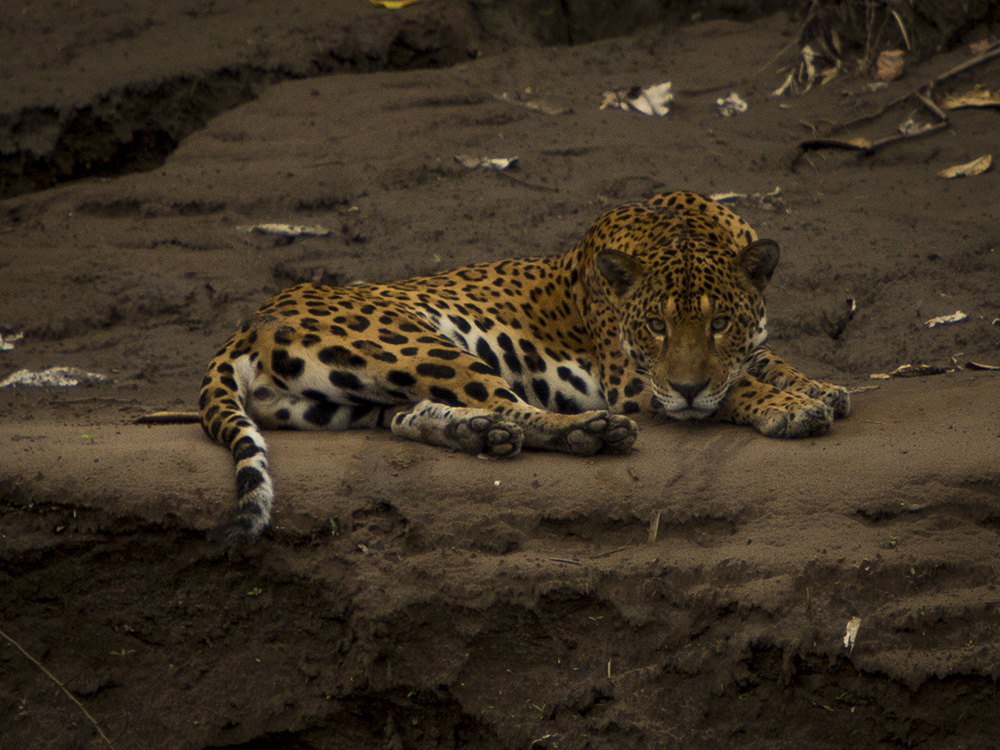The Amazon is truly one of the most incredible places on Earth. It’s a vast region, spanning 1.4 billion acres (5.7 billion hectares) of dense forest that spreads over eight countries: Brazil, Bolivia, Peru, Ecuador, Colombia, Venezuela, Guyana, Suriname, and French Guiana.
The Amazon contains half of planet’s remaining tropical forests, 6,500km (4,039 mi) of rivers, and one in 10 of the world’s known species of plants and animals. Many of the animal species found in the Amazon are unique to the region — and many more are just plain unique, such as frogs that secrete brightly coloured poison, tarantula spiders so big they eat birds, eels that can stun prey with hundreds of volts of electricity, and carnivorous ants.
For the average visitor, however, these are five of the most amazing — and perhaps less intimidating — animals you would be lucky to see in the Amazon rainforest.

Slow-moving sloths are among the Amazon's most adorable inhabitants. Photo courtesy of MudflapDC.
Sloths
Sloths are the world’s slowest-moving animals — in fact, the sloth’s genus, bradypus, is Greek for “slow feet” — and can often be seen in the trees eating leaves, twigs, and buds along roadsides or riverbanks. There are two types of sloths, two-toed and three-toed, and both can be found in the Amazon and other parts of Central and South America. Sloths spend about 15–20 hours per day sleeping, but are also known to enjoy dropping into rivers and going for a swim.
Did you know: The sloth is so slow that algae grows on its fur, which helps it stay camouflaged and hidden from predators in the trees (this algae also offers a tiny ecosystem for sloth moths, who lay their eggs in the sloth’s fur and use the algae as a food source).

Even in the wild, macaws are known to imitate human voices.
Macaws
More than 1,000 species of bird can be found in the Amazon, making it a bird-lover’s paradise, but few are more beautiful and spectacular than macaws. Macaws have vibrant plumage and are the largest birds in the parrot family, with a wing span that can reach four feet. As macaws often band together in flocks of up to 30, they’re easy to see because of their size and colour, but also because of their loud calls and squawks. Unfortunately, many macaws are illegally trapped for pets and several species are endangered as a result.
Did you know: Macaws are also very intelligent and social animals. They mate for life, and share food, grooming, and parenting duties with their mates.

The so-called Jesus lizard is known for its ability to run across water. Photo courtesy of Zweer D.
Jesus lizard
The “Jesus lizard” has to be seen to be believed. This lizard’s real name is the common basilisk, but it’s often called the Jesus lizard because it appears to be able to walk on water. In actuality, when running from predators, the common basilisk rears up on its hind legs and skims across the surface of water toward safety, sometimes covering up to 20m (66 ft) of H2O. However, if the distance is too far to run, the lizard is also able to swim until it reaches land. The basilisk’s toes have skin flaps and air pockets to help enable this “miracle” of nature.
Did you know: When skimming across the water, they can reach speeds of up to 8km (5 mi) per hour.

The piranha's reputation is worse than its bite. Photo courtesy of Mor.
Piranhas
Carnivorous, sharp-toothed piranhas are the stuff that nightmares are made of. Piranhas do indeed have sharp teeth but — despite the many Hollywood movies that suggest otherwise — they rarely attack humans, and they rarely attack in packs. Typically, they feed on insects, other fish, crustaceans, worms, carrion, seeds, and even plant material. Piranhas act with aggression only when they’re hungry or if they feel threatened, meaning they rarely bother human swimmers.
Did you know: The piranha’s bad reputation may have been born when former U.S. President Theodore Roosevelt wrote about his journeys in South America in 1913. Locals gathered a pool of piranhas together, starved them, and threw a cow carcass in the water to demonstrate to Roosevelt the fishes’ strength and ferocity. The fish — hungry and agitated — devoured the cow in minutes.

Jaguars have the strongest bite of any big cat. Photo courtesy of Joseph K.
Jaguar
Anyone who’s ever seen a big cat in the wild will tell you that it’s one of the most exciting wildlife experiences you can have. Jaguars are the largest cats in South America. Jaguars are similar in many ways to leopards, which are found only in Asia and Africa, but are much heavier — and, unlike most cats, both wild and domestic, jaguars are great swimmers. These magnificent creatures are on the near-threatened list due to poaching and the destruction of the rainforest. There are an estimated 15,000 jaguars still living in the wild.
Did you know: Jaguars have the most powerful bite of all cats in the animal kingdom.
Getting there
Our Amazon River Cruising tour gets you up close and personal with these amazing animals' natural habitat. We're excited at the prospect of showing you more of this big, beautiful world — check out our Amazon River Cruising itinerary here.























